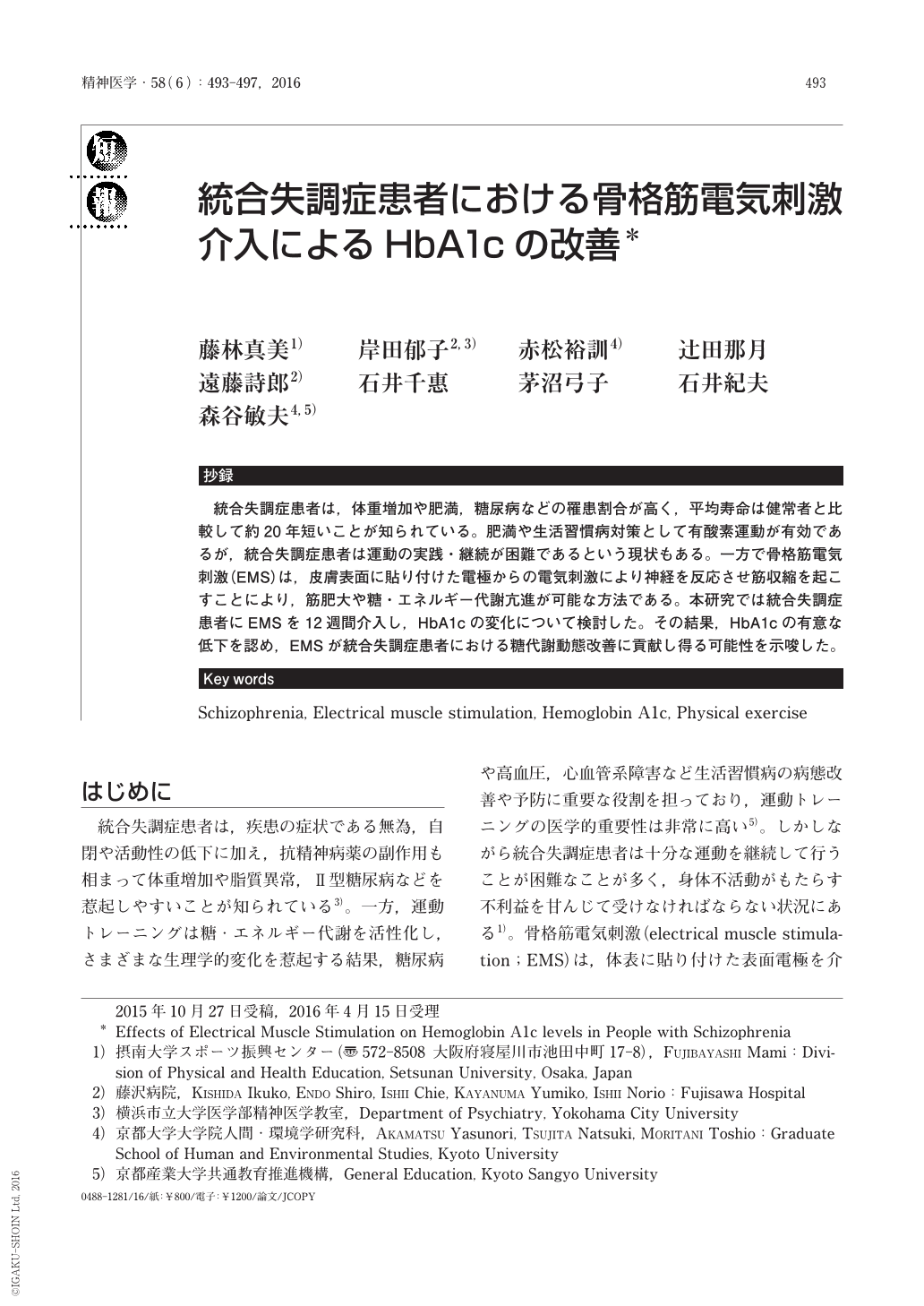Japanese
English
- 有料閲覧
- Abstract 文献概要
- 1ページ目 Look Inside
- 参考文献 Reference
抄録
統合失調症患者は,体重増加や肥満,糖尿病などの罹患割合が高く,平均寿命は健常者と比較して約20年短いことが知られている。肥満や生活習慣病対策として有酸素運動が有効であるが,統合失調症患者は運動の実践・継続が困難であるという現状もある。一方で骨格筋電気刺激(EMS)は,皮膚表面に貼り付けた電極からの電気刺激により神経を反応させ筋収縮を起こすことにより,筋肥大や糖・エネルギー代謝亢進が可能な方法である。本研究では統合失調症患者にEMSを12週間介入し,HbA1cの変化について検討した。その結果,HbA1cの有意な低下を認め,EMSが統合失調症患者における糖代謝動態改善に貢献し得る可能性を示唆した。
Obesity, diabetes, and metabolic syndrome are more common in people with schizophrenia compared with the general population. The reasons for this difference may include an inherent increased risk of diabetes and/or metabolic syndrome, associated with psychiatric disease itself and are often attributed to antipsychotic treatment. In addition, cardiovascular diseases may partly explain why people with schizophrenia die at least 10 years earlier than the general population. Therefore, successful strategies for reducing obesity, diabetes, and metabolic risk factors are of utmost importance in people with schizophrenia. The present study is designed to investigate percutaneous electrical muscle stimulation (EMS) can attenuate hemoglobin A1c levels in people with schizophrenia. Ten people with schizophrenia underwent a 12-week EMS investigation. The EMS intervention was significantly decreased hemoglobin A1c levels. The present result provides first evidence indicating that EMS is a new exercise method for glucose metabolism in people with schizophrenia.

Copyright © 2016, Igaku-Shoin Ltd. All rights reserved.


